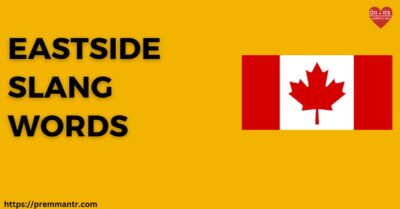Slang words are an integral part of any culture, reflecting its unique identity and sense of community. In this article, we delve into the intriguing world of Eastside slang words, exploring the vibrant linguistic tapestry that characterizes this specific region. From its historical roots to contemporary usage, we will uncover the meaning and significance of Eastside slang, providing readers with an entertaining and informative glimpse into the local lexicon.
A Brief History of Eastside Slang
Eastside slang words have their origins in the diverse communities that have shaped the region over time. Rooted in the cultural melting pot of Eastern neighborhoods, these expressions often derive from the intermingling of various immigrant groups, historical events, and local experiences. For instance, Eastside areas with strong Latino influences may incorporate Spanish terms, while other neighborhoods may draw from African American Vernacular English or even borrowings from indigenous languages.
Read – Very Popular Canadian Slangs, You must know !
Key Features of Eastside Slang
Eastside slang is characterized by its creativity, adaptability, and ever-evolving nature. It serves as a form of self-expression, fostering a sense of belonging and solidarity among community members. Some common features of Eastside slang include:
a. Neologisms: Eastside slang words often emerge through the creation of new terms or the adaptation of existing vocabulary to fit the local context. This linguistic ingenuity adds a dynamic element to the lexicon.
b. Code Switching: Eastside residents may effortlessly switch between slang and standard language depending on the social setting. This linguistic dexterity allows for effective communication and the establishment of a shared identity.
c. Cultural Signifiers: Many Eastside slang words reflect cultural references, celebrating local traditions, musical genres, sports, or historical events. This connection to specific cultural markers reinforces a sense of community.
Popular Eastside Slang Words
a. “Vato” or “Vata”: This term, derived from Spanish, is widely used in Eastside communities to refer to a guy or a person, often as a friendly or casual term of address.
b. “Chillin'”: Used to express a state of relaxation or calmness, this word finds its way into everyday conversations, reflecting the laid-back atmosphere of the Eastside.
c. “Fam” or “Familia”: These words highlight the importance of family and close-knit relationships in Eastside communities. They are often used to refer to friends or trusted individuals.
d. “Cruisin'”: Referring to driving around leisurely, often with friends or loved ones, this term embodies the car culture that is deeply ingrained in Eastside neighborhoods.
e. “Hyphy”: Originating from the Bay Area, this term has gained popularity in Eastside communities to describe an energetic and lively atmosphere, especially in relation to music and parties.
Eastside Slang in Pop Culture
Eastside slang has permeated various forms of popular culture, including music, movies, and television. Artists and entertainers often incorporate local slang into their lyrics, further disseminating these expressions to wider audiences. As a result, Eastside slang has become an essential element of the region’s cultural identity.
Conclusion of eastside slang words
Eastside slang words are a reflection of the vibrant communities that make up this unique region. From its historical roots to contemporary usage, the lexicon embodies the diverse cultural influences and the rich tapestry of experiences found in Eastside neighborhoods. Embracing the creativity and distinctiveness of local language adds color and character to the region, fostering a sense of identity and community.
- Formula 1 General Admission Tickets: Guide to Canada Grand Prix
- The Ultimate Guide to Circuit Gilles Villeneuve General Admission
- Exploring the Unique Delights – Weird Canadian Foods
- Discover the Exquisite Flavors of Uncommon Canadian Foods
- Quintessential Things Canadians Do at Parties: Embracing Fun
